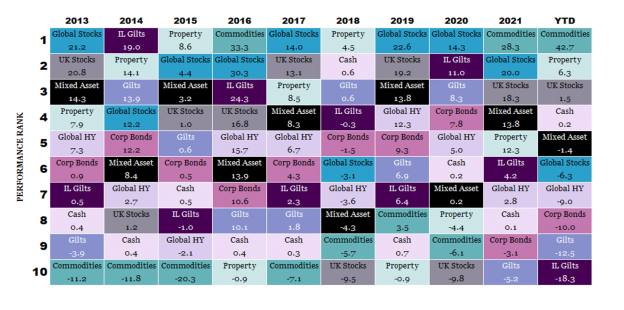
UK inflation is rising at its highest rate in four decades and average asset returns are struggling to keep up with the pace.
In addition, unstable geopolitics, and the lingering threat of Covid-19 is keeping market volatility high. Against this stark backdrop, how can the advice community continue to manage client expectations?
The policy response to Covid-19 has resulted in stretched asset valuations and, along with rising inflation, was already giving advisers a strong headwind going into 2022.
The bottom line is that the investment status quo is being challenged over the short term and this can potentially have a huge impact on existing advice processes.
Here we look at three of the more pertinent challenges and explore how advisers can overcome these obstacles:
- The mindset shift: is this required while inflation outstrips average returns?
- Sustainability of income: how do you preserve the sustainability of your clients’ income in an inflationary and volatile period?
- Dialling up risk: is there an alternative to increasing clients’ risk for hunting higher returns?
The mindset shift
Each business cycle has inflationary periods so we should not be surprised by this latest surge. We have become accustomed to accepting the fact that investment solutions targeting above inflation growth will do that on an annual basis, in the same way that we are programmed to expect that our wages will continue to rise with inflation.
But this inflationary period feels different. Straddled with the increased market volatility, do we need to re-adjust our own expectations as to what investments should be delivering and perhaps most importantly, your clients’ expectations?
Naturally, there is always a need to temper expectations during these periods and market shocks. But there are also actions that can be taken to mitigate these risks such as adopting a broader diversified investment approach.
Not all asset classes have lagged inflation during this current cycle as highlighted in the chart below.

Each coloured box resembles a different asset and ranks them in order of highest returns over the last nine calendar years and to the end of April 2022. Traditional inflation hedges like commodities and commercial property have thrived during this recent inflationary period and have introduced additional resilience into investment portfolios.
Those portfolios with a broader range of asset classes will be outperforming more basic multi-asset solutions in this period such as the balanced 60/40 approach.
Multi-asset solutions broadly based on an equity and fixed income split are not sufficiently diversified to weather inflationary conditions. Large exposures to long duration fixed income and US equities could prove painful as interest rates continue to rise.
In this context, the importance of effective diversification is compounded. Having a more diverse spread of asset classes has the potential to help maximise risk-adjusted returns in a wider variety of market conditions and minimise the impact of a large fall over both the short and long term.
As demonstrated in the above chart, by blending asset classes together you are effectively taking any individual bets off the table and are highly unlikely to come out bottom of the pile as proven over the last decade or so.
Just remember that short-term underperformance should be expected from time to time because you may have exposure to some asset classes delivering positive returns and some with negative returns. This is very much a success of the design in ensuring client investments do not all perform exactly the same through a variety of market cycles and events.





